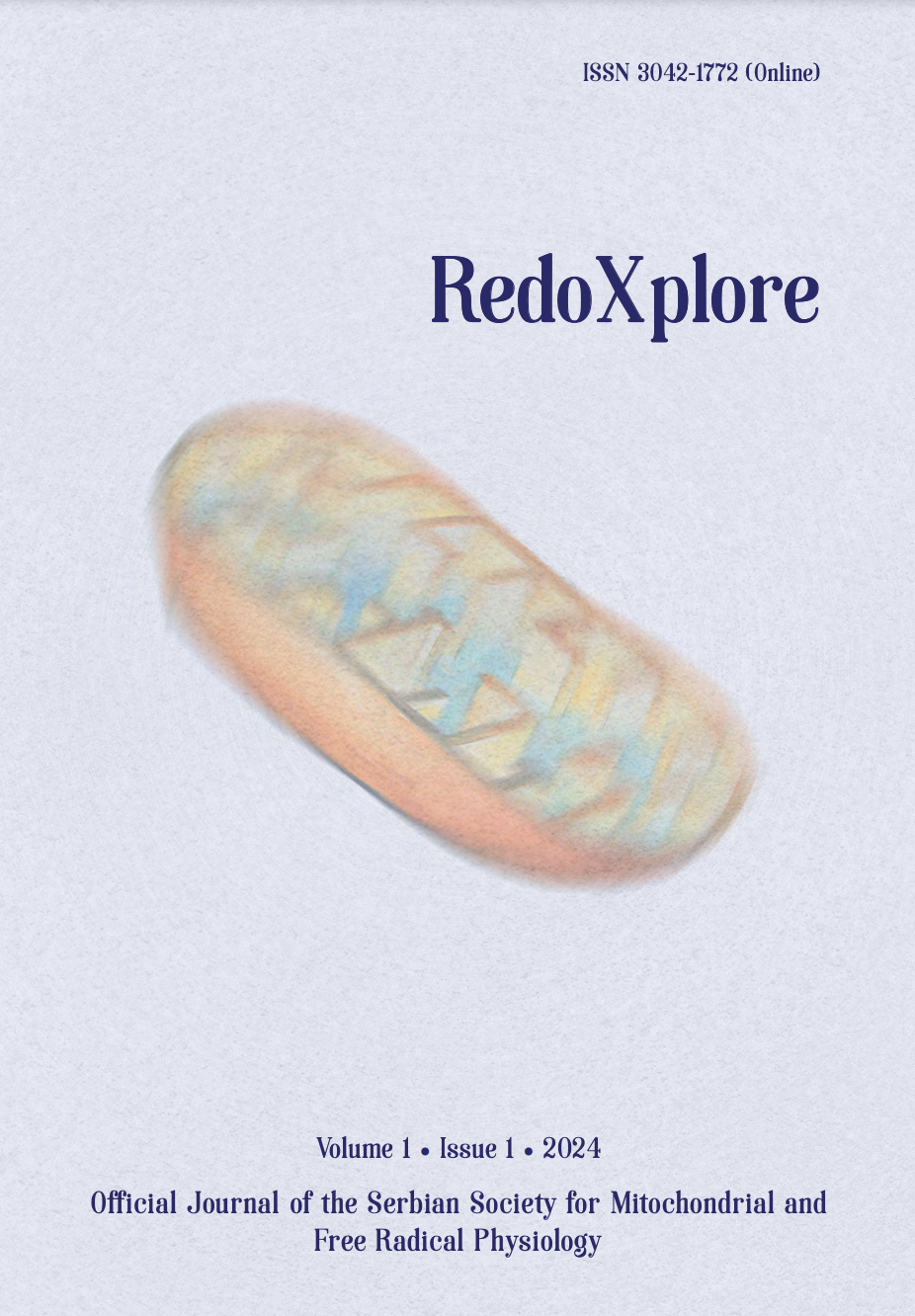
More articles from Volume 1, Issue 1, 2024
REDOX AND METABOLIC REPROGRAMMING OF BREAST CANCER CELLS AND ASSOCIATED ADIPOSE TISSUE - THE CORNERSTONES OF ADAPTIVE TUMOUR BEHAVIOUR
INSULIN MODULATES MITOCHONDRIAL STRUCTURAL AND FUNCTIONAL MOSAICISM IN BROWN ADIPOCYTES
NITRITE MITIGATES OXIDATIVE BURST IN ISCHEMIA/REPERFUSION IN BRAIN SLICES
NITRIC OXIDE, SUPEROXIDE AND PEROXYNITRITE – REDOX REGULATION OF THE CARDIOVASCULAR SYSTEM BY NITRO-OXIDATIVE STRESS AND S-NITROS(YL)ATION
DIETARY NITRATE AS PIVOT ON THE GUT MICROBIOTA-HOST REDOX COMMUNICATION
NITRIC OXIDE, SUPEROXIDE AND PEROXYNITRITE – REDOX REGULATION OF THE CARDIOVASCULAR SYSTEM BY NITRO-OXIDATIVE STRESS AND S-NITROS(YL)ATION
Department for Cardiology, University Medical Center of the Johannes Gutenberg University Mainz , Mainz , Germany
German Center for Cardiovascular Research (DZHK), Partner Site Rhine-Main , Mainz , Germany
Editor: Bato Korac
Published: 29.08.2024.
Plenary lectures
Volume 1, Issue 1 (2024)
Abstract
Oxidative stress is characterized by an excessive and prolonged formation of oxidants, causing an accumulating load of irreversible oxidative modifications of proteins, lipids, and nucleic acids that compromise cell integrity. This competes with the concept of redox regulation, combining the regulatory influence of nitric oxide (•NO), superoxide (O2•―), and their derivatives on redox-sensitive signaling pathways in the cell. The transition from redox regulation to oxidative stress is not only determined by the absolute amount of oxidants formed, but also by the respective intracellular site of formation, by the capacity of the defense machinery of the respective cell type, and by the ratio between •NO and O2•― that determines the nature of secondary radical species formed. Equimolar and concomitant fluxes of •NO and O2•―, for instance, favor the formation of the oxidant peroxynitrite making O2•― an antagonist of •NO as well as an inhibitor of prostacyclin synthesis, while an excess of •NO over O2•― supports the formation of nitrosating species. Secondary •NO-derived species hence not only define cellular targets affected but also the nature of posttranslational modifications. A profound knowledge of redox regulation and the conditions supporting its fluent transition into oxidative stress is hence of outermost importance in molecular cardiovascular medicine. The present overview therefore aims to determine the spectrum of •NO-derived reactive species and the cellular conditions characteristic for reversible modifications and their modulation of cellular targets in redox regulation. The second objective is to define preconditions in cardiovascular cells culminating in an expenditure of the cellular antioxidant system and an accumulation of irreversible modifications that compromise cellular functions to a point of no return.
Citation
Copyright

This work is licensed under a Creative Commons Attribution-NonCommercial-ShareAlike 4.0 International License.
Article metrics
The statements, opinions and data contained in the journal are solely those of the individual authors and contributors and not of the publisher and the editor(s). We stay neutral with regard to jurisdictional claims in published maps and institutional affiliations.






